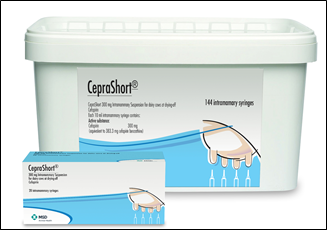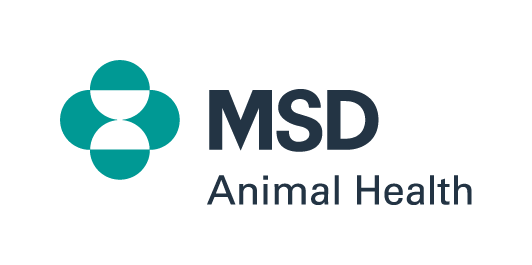What is new around dry cow therapy?
We are now immersed in a new era of dry cow therapy on Irish dairy farms. Many have embraced selective dry cow therapy (SDCT), but we are still on our journey towards reducing our antibiotic usage within the national herd. Let’s take a look at the goals outlined within the CellCheck Animal Health Ireland program, what is new in dry cow therapy (DCT), and how to optimise our dry cow management going forward.
How do we remain focused on this goal?
In 2021 the CellCheck Technical Working Group (TWG) of Animal Health Ireland (AHI) set out a list of goals to reach by 2025 to address SCC, milk recording, and data collection. The SCC aim is 85% of national milk supplied to be <200,000/mL. Another aim is 90% of herds milk recording with a minimum of 6 recordings/year. Finally, data collection of mastitis cases and dry cow treatments to be conducted by farmers. These targets give us a clear focus and are essential on our journey towards a more sustainable approach to DCT.
We know that selective dry cow therapy can be implemented safely on farms, but we need the data to be able to conduct it responsibly. We must continue to be careful in the approach to SDCT, or our cows will be affected either acutely or throughout their subsequent lactations. This in turn will affect our sustainability targets at farm level as year-on-year cows and heifers are culled out of the herd due to chronic SCC problems. Records are essential to avoid this. Using milk recordings and analysing individual SCC readings of cows we can divide the herd into groups and treat accordingly for the dry period. We encourage regular culture and sensitivity of milk samples to ensure correct antibiotic selection and use on farms at dry off time.
So, what’s new in dry cow management?
The EU AMEG (Anti-Microbial Expert Group) guidelines now provide a steer for veterinary practitioners in dry cow management. The fundamental goal is to use a dry cow product from the lowest AMEG class first. However, as this class contains a restricted number of active ingredients often with narrow spectrum of activity, it may be necessary to reach to higher groups. The market leading DCT, Cepravin, contains cephalonium, which is in the C class of AMEG. It is the only product licensed specifically to reduce SCC and has a long duration of action. The DCT range from MSD Animal Health has now been extended to include a new short-acting product, called CepraShort, containing cephapirin, another ingredient in the C class. Covering a 32 day dry period with a one day (24 hours) milk withdrawal, CepraShort is effective against all Staphylocci (including coagulase negative) and the common mastitis-causing Streptococci.
Having now revisited new options in dry cow therapy how can we ensure that the procedure is carried out to optimal effect?
Milk recording and data collection on treatments that cows receive for mastitis during lactation are essential to the story of mastitis and SCC control on Irish dairy farms. It is advised that vets encourage farmers to start milk recording and gathering these data to be able to implement a safe DCT protocol for cows at farm level. Analysing milk records gives vets a great insight into what type of SCC/mastitis issue is on the farm based off the patterns and trends the report demonstrates i.e., environmental or contagious. The CellCheck farm summary report gives star ratings of current mastitis control within this lactation, SCC, clinical mastitis cases, and a comparison between bulk tank and milk recording SCC. Some useful targets relevant to milk recording are included in Table 1 below. Targets are essential in benchmarking and guiding DCT protocols.
| Benchmark | Target |
| Recent infections (first milk recording >200,000 cells/mL) | <7% |
| Persistent infections (2 or more consecutive milk recording >200,000 cells/mL) | <8% |
| Cows calving down <200,000 cells/mL | >85% |
| Bulk SCC | <200,000 cells/ml |
| % of herd >200,000 cells/mL | <15% |
Conclusion
By working closely with the various shareholders and aligning our vision around mastitis control and dry cow therapy, we now offer solutions for the challenges that forthcoming changes in dry cow management pose to the Irish dairy industry. There is no longer a “one-approach-fits-all” when it comes to DCT. Success will involve correct selection of cows and what they should receive, relevant choice of product including a close review of active ingredients and duration of action as well as education of farmers on all the elements that comprise good dry cow management. This might take the form of workshops or discussion groups to effect change and the necessary dissemination of knowledge that these legislative amendments will herald. We must embrace these changes positively to ensure we move collectively towards a more responsible use of antibiotics in our national herd.
For more information on CepraShort or any of the MSD Animal Health udder health range, please reach out to your account manager.

References
Geary, U., Lopez-Villalobos, N., Begley, N., McCoy, F., O’Brien, B., O’Grady, L., Shalloo, L., (2012) Estimating the effect of mastitis on the profitability of Irish dairy farms. Volume 95, Issue 7 Journal of Dairy Science
Animal Health Ireland CellCheck Dry Cow Strategy (Accessed 12th June 2022)
